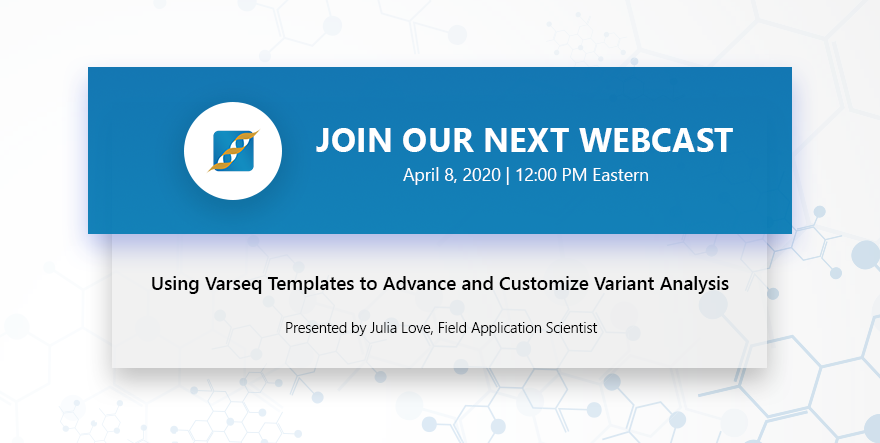
Golden Helix ships a variety of templates that are designed to provide a starting point for users to evaluate variants in VarSeq. Naturally, as users become more familiar with the software, there is a desire and necessity to tailor the template design to accommodate a more thorough variant analysis. To add to these template customizations there are several algorithms and annotation sources available in VarSeq that many users may not know of. This webcast will provide ideas on how to combine these annotations sources and algorithms in VarSeq to create templates that are more inclusive for your variant analysis.
The annotation sources that I will be discussing in detail are the following:
- GnomAD- Resource that aggregates whole exome and whole genome sequencing data and serves as a population frequency track.
- OMIM- Catalog of human genes, genetic disorders, and traits focusing on the gene-phenotype relationship.
- Cosmic and CIViC- Cancer databases of somatic mutations with the submission of clinical interpretations.
- dbNSFP- Functional predictions and scores from SIFT, Polyphen2, Mutation Taster, and others for human SNPs.
The algorithms that will be discussed in detail are the following:
- PhoRank: A phenotypic prioritization algorithm that ranks genes based on their relevance to user-specified phenotypes as defined by the gene ontologies and HPO biomedical ontologies.
- Count Alleles: Provides alternate allele counts, genotype counts, and allele frequencies across multiple samples.
- Match Genes List: This algorithm will specify whether variants are in genes that match a gene list specified by the user.
- ACMG Classifier: Calculates classifications for each variant based on the ACMG Guidelines.
The algorithms and annotations sources mentioned above, as well as others, will be incorporated into both a cancer and germline workflow. In both scenarios, I will discuss the limitations of the shipped template designs and demonstrate how users can customize them to generate more advanced templates. Furthermore, we will also show the new repository for available templates and, in the spirit of sharing best practices, show how users can submit their templates to the repository.
I hope you will all join me for the exciting upcoming webcast by saving your seat with the link below.